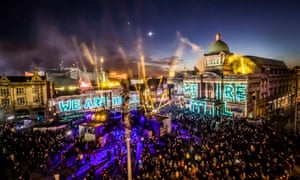 |
| An installation titled We Are Hull, by artist Zolst Balogh, is projected on to buildings in the city’s Queen Victoria Square. Photograph: Danny Lawson/PA |
Hull is seizing the chance to show off its cultural hotspots – and appetite for a party. Our writer rejoices at her home town’s newfound cool, and lists the best places to eat, drink, stay and shop
I’ve often fantasised about coming from somewhere cool: Brighton, say, or Liverpool, even Newcastle. Saying you’re from Hull usually gets blank or pitying looks. Vice magazine last year called it a “glum port town falling apart at the seams”. Its post-war centre is, at first glance, admittedly soulless, the main roads leading to it remarkable only for graffiti and boarded-up shopfronts.
But my fantasy could become reality as Hull reinvents itself this year as UK City of Culture. The point of the designation goes way beyond putting on lots of cool arts events; the festivities have the potential to change the city, in concrete ways (literally – in a staggering amount of building and refurbishment) and in how it is seen locally and by the rest of the world.
With a blizzard of events, from an Anthony Minghella retrospective (he studied here) to a contemporary theatre festival, the idea is to offer an arms-wide welcome, revealing Hull’s northern but distinct identity. “We are down to earth but a bit provocative and mischievous,” says director of marketing Phil Batty. “We speak in a different voice.” (We certainly do. Just listen to anyone greeting you: “Ur hellur.” Revel in the vowels if I ask for a “dry white wine”.)
Among several 2017 slogans, I like “Everyone back to ours” and “You can sleep when it’s over”, which emphasise the warm welcome and year-long party spirit. And no one who has been to Hull’s annual Freedom Festival (first weekend in September, established in 2007 to celebrate the bicentenary of the abolition of the slave trade, led by Hull-born MP William Wilberforce) can doubt that the city throws a good party. It’s like a mini Edinburgh festival, except that almost everything is free. In 2016 we watched bands from all over the world playing in docks, underpasses and tents; caught plays, comedy and performance poetry; saw drumming with fireworks, street theatre and an amazing aerial display on a vertical stage. And, like going to Edinburgh, we still felt we’d missed three-quarters of it.
City culture chief Jon Pywell says Hull used to look inland, trying (and failing) to emulate bigger neighbours Leeds and Sheffield, but is now finding the confidence to be itself: a port city, with an intimate relationship with the sea (as celebrated by last year’s Sea of Hull art installation, with crowds of naked volunteers painted blue and green).
Hull’s subversive attitude shows in where it puts royalty: over toilets. The equestrian statue of King Billy on Market Place bestrides an art nouveau gents, and in Queen Victoria Square, the unamused empress herself is enthroned above public conveniences.
The monarch is now joined in the square by a giant, 75-metre-long propeller blade from an offshore wind turbine, erected in the early hours of last Sunday in a project that had been kept secret for months. “This is probably the biggest ever intervention in a public space,” said Nayan Kulkarni, the artist behind the project. It came as citizens were saying goodbye to the Made in Hull light and sound show – with soundtrack featuring, among others, the voice of Fine Young Cannibals lead singer Roland Gift, who lived in Hull as a teenager – that launched the city’s new cultural dawn and drew an estimated 230,000 visitors.
Also on this tarted up and newly pedestrianised square is more about Hull’s anti-royal past: the excavated remains of Beverley Gate, famously closed to King Charles I by governor Sir John Hotham in 1642, sparking the English civil war. (A new RSC/Hull Truck comedy, The Hypocrite by Richard Bean, stars Mark Addy as Hotham, 24 February-18 March, then at the Swan, Stratford on Avon.)
The square is also the site of the Ferens art gallery (free) now upgraded with facilities for major touring exhibitions. It reopened with its own open exhibition (local heroine Maureen Lipman was on the selection panel) and its permanent collection beefed up by a rare 1320 painting by Sienese master Pietro Lorenzetti.
South-east of here is the old town, always interesting, but now coming into its own. Young people are living here again – attracted by low prices for pretty Georgian houses in Prince Street and around, and taking advantage of low rents to open businesses. Its many characterful pubs attract fun-loving crowds by night, while by day families come for its excellent free museums (see below).
Pedestrianised Whitefriargate leads via Land of Green Ginger (yep that’s a street name) and the George Hotel with its “smallest window in the world” (a 10-inch by one-inch glazed slit for a porter to keep watch) to Silver Street and Hull’s most famous pub, Ye Old White Harte. Built in 1550, it’s known for its “plotting parlour”, where Hotham supposedly laid his seditious plan. From here, Scale Lane leads to High Street, parallel to the river Hull, with alleyways called staiths running down to waterside wharves.
High Street is home to Hull’s museum quarter, an engaging quartet of hands-on venues: Wilberforce House (all museums free) tells of slavery from 18th to 21st centuries; the archaeology museum has a lifesize woolly mammoth among exhibits; in the Streetlife Museum, recreated street scenes have sounds and smells, and children can clamber over vintage trams and buses; and the city’s last sidewinder trawler, the Arctic Corsair, gives a taste of the life of deep-sea fishermen.
Scale Lane footbridge is a venue as well as a crossing, with shrubs and plants, sheltered seating and a birdsong soundtrack. Pedestrians can ride along when it swings open to let shipping past. (Planned redevelopment of the east bank of the Hull never materialised, though, and the innovative bridge leads to a Premier Inn and little else.)
Remember Venn diagrams from school? Drypool Bridge, five minutes upriver, has been repainted with overlapping circles in memory of their inventor, John Venn, born nearby in 1834. And it was announced late last year that Holy Trinity, the impressive 14th-century parish church on Market Place, is to be made a Minster in a ceremony on 13 May.
South of Castle Street, the triangle bordered by the river Hull and the marina is less pretty but has a tangible feeling of progress: Humber Street, with its newly laid cobbles, is the city’s hottest destination – with a recording studio and a microbrewery as well as bars, clubs, restaurants and regular pop-ups. Contemporary art space Humber Street Gallery (opening 3 February) will add to the appeal, as will 109 new homes in the former Fruit Market.
Opposite popular aquarium The Deep, at the confluence of Hull’s two rivers, is the Stage@TheDock amphitheatre, the only newly built venue for City of Culture year. It proved its worth as music and exhibition space in 2016’s Freedom Festival, and is a good picnic spot.
Hull Truck has more premieres and collaborations planned, but theatre lovers should also check out Kardomah94, in a former bank near the Guildhall, with a bistro and an intimate space for fringe productions, comedy, music, and art exhibitions. (Not everything is rosy, however: expansion and modernisation of the mainstream New Theatre is so behind schedule it won’t open until August, missing more than half of Hull’s year in the limelight.)
This year will also see the Humber Bridge turned in to a sound installation, the 2017 Turner Prize exhibition, Ziggy Stardust and the Spiders from Mars playing “live” for the first time (in a band including Spiders drummer and local lad Woody Woodmansey; the late Mick Ronson, who played the distinctive Ziggy riffs, was also from Hull) and myriad other events. By the end of it, everyone will be wishing they, too, had been born in this coolest of cities.
HULL: INSIDER GUIDE
Where to eat
Fish and seafood from the North Sea coast are excellent, and Hull stalwart Cerutti’s offers estuary views and a huge choice of fishy starters and mains (two courses from £19.95, 10 Nelson St, 01482 328501, ceruttis.co.uk). The newer 1884 Dock Street Kitchen also offers fine dining, but I prefer its recent addition, opened last year on the other side of the marina: 1884 Wine and Tapas (tapas from £6, Freedom Quay, 01482 216306, 1884wineandtapasbar.co.uk) uses local fish, plus meat and game from named suppliers, in tasty tapas (above) from a regularly changing menu. The wine list is Spanish (except for champagne).
At the other end of the scale, the new Head of Steam pub on King Street has paired with street food company KerbEdge to offer Hull speciality the patty – in a butty. Invented so those who couldn’t afford fish could have something to go with their chips, patties are just mash with herbs, battered and fried till crisp. Horrifying to clean-eaters, they’re great for soaking up pints. Hey – like with sleeping, you can eat salad when it’s over!
For lunchtimes, Kardomah94 (see above) does interesting salads, pizzas and sharing boards (pizza from £9.50, 94 Alfred Gelder St, 01482 317941, kardomah94.com).
Where to drink
The old town’s dozens of pubs range from Ye Olde Black Boy (below left, 150 High Street), open since 1729, with narrow rooms and cramped corridors, to year-old shabby chic Furley & Co (18 Princes Dock Street). The Lion and Key (48 High St), leader of the old town’s real ale resurgence, has thousands of beer mats pinned to the ceiling. Surveying the impressive range of craft beers on tap, I asked how often they change. “Oh, about every hour,” said the barmaid. Having its own microbrewery next door (the Cat Head) probably helps.
The pierside Minerva (Nelson St, minerva-hull.co.uk) has been going since 1829, and recently added a cute “Gin caravan” (above) to its real ale offering. And for a pre-show drink, the Kardomah (see above) does great cocktails with terrible names such as gin and bear it, and rum away with me. For the odd non-alcoholic drink in this party city, Liquid Jade (on Facebook), opened in 2015 on Whitefriargate by young entrepreneur Claire Buffey, is all about ethically sourced leaf teas, but also does own-blend coffee and homemade cakes.
Where to shop
Hull has a great independent shops, but don’t expect handmade soap or artisan leather. From electronics and vinyl to fashion, shops here are more, well, practical. The Victorian glass-roofed Grade II-listed Hepworth Arcade in the old town, is home to hi-fi dealer Fanthorpes where music lovers have worshipped since 1946, plus the even older Dinsdale’s joke shop, Beasley’s Hats and vinyl store Funkywormhole, which grew out of a Leeds club night and offers early customers free coffee. Lovers of vintage fashion are spoilt for choice: micro-chain Poorboy Boutique has a branch in Prince’s Quay shopping centre as well as one on Newland Avenue to the north. In Hull’s other Victorian Arcade, Paragon, the Magpie’s Den lives up to its name.
Where to sleep
Hull has more than its share of chain hotels, so rates are competitive (doubles from £50). Holiday Inn Hull Marina, (online deals around £68 B&B for two) is in a great location for the old town. Family-run Kingston Theatre Hotel (doubles from £62 B&B, kingstontheatrehotel.com) is in the former home of Victorian couturier Madame Clapham. Rooms are sleek and modern, but the food is retro: fruit juice and bacon and egg at breakfast, and dinners of, say, steak pie and trifle, are all served by charming motherly waitresses.
By
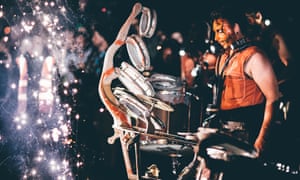
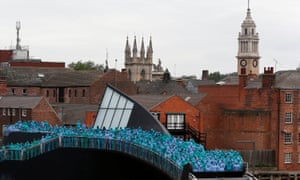

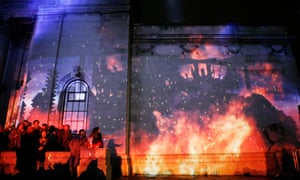

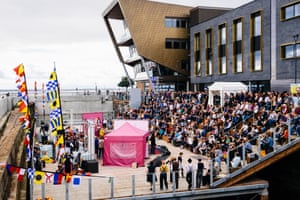
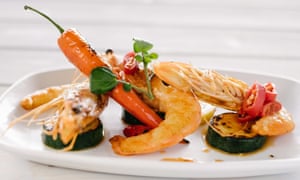
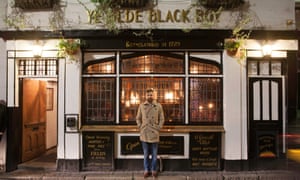
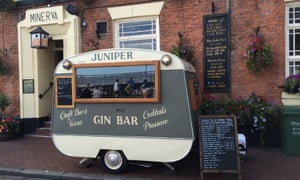
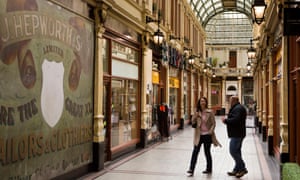
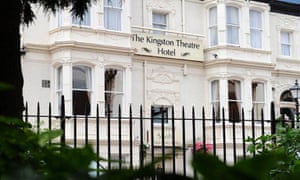
No comments:
Post a Comment